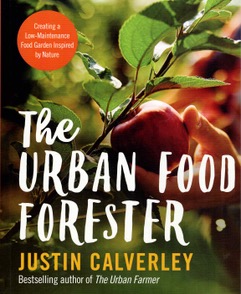Book Review
“The Urban Food Forester” by Justin Calverley, published by ABC Books, distributed by Harper Collins. Price $49.99. Reviewed by Tony Orman.
Most outdoor people have a yen for producing food from the home garden. I guess it ties in with the “hunter-gatherer” philosophy which of course also embraces fishing in terms of putting food on the table.
Covid-19 had an immense impact on society with a good percentage of people re-evaluating their life style and with limited access to shopping, turning back to what everyone once had in the backyard – a vegetable garden. Unfortunately fast food and its accomplice obesity have invaded society.
Food security came to the fore during Covid..
This book takes home food security to an additional level with incorporating an upper and lower canopy and making judicious use of shrubs, herbs, ground covers, climbers and root crops. For example the upper canopy might accommodate walnuts with figs in the lower canopy, that benefit from summer shade.
Stone fruit can come into the options and underneath citrus. There’s a host of information to considering factors of orientation relative to summer and winter sun, soils, micro-climates and other factors – and also in designing your food forest, consideration of the food you want produced while meeting the needs and preferences of individual species as to sun, soil and such factors.
In the “Urban Food Forester”, there’s so much information on a wide variety of plants from strawberries to mint, to tea, herbs such as oregano to thyme, sorrel and root crops such as potatoes, garlic etc.,
This book by Melbourne based horticulturalist, broadcaster and educator may be Australian oriented but remember the ”top of the South” and Tasmania share the same latitude.
Many of the tree and plant species are especially suited to milder areas near the coast.
But the main thrust of this book is the concept of creating a “food forest” even in suburbia. Into your design, consideration of individual plants, climbers or trees relative to the climate of your region is vital.
The author cites a Melbourne garden – an edible producing “food forest”, of 150 square metres that produces edible yields for the gardener’s benefit. Four years after the initial planting, two hours of maintenance a week is all that’s required – as the author puts it “a fair swap for the weekly supermarket shop.”
The book is essentially about creating a low maintenance food garden, inspired by Nature. It’s an intriguing, informative, inspirational and timely book especially in view of the on-going rising cost of living.


It sounds a great concept. My advice is if space is limited, I suggest gardeners looking for “bang for their bucks” concentrate on crops that give a long and repitive harvest such as broad beans, peas and runner and dwarf beans where you pick again and again from the one type. It is sad to see people being idle and going the fast foofd way. Lazy and expensive and certainly not nutritious.
The book looks to be a great idea with upper canopy, lower canopy and ground all producing.
I would add the benefits of chemical free (or near to it) vegetables and fruit, certainly far far, less chemicals than supermarket stuff.
The layered approach of canopies and ground production makes much sense.